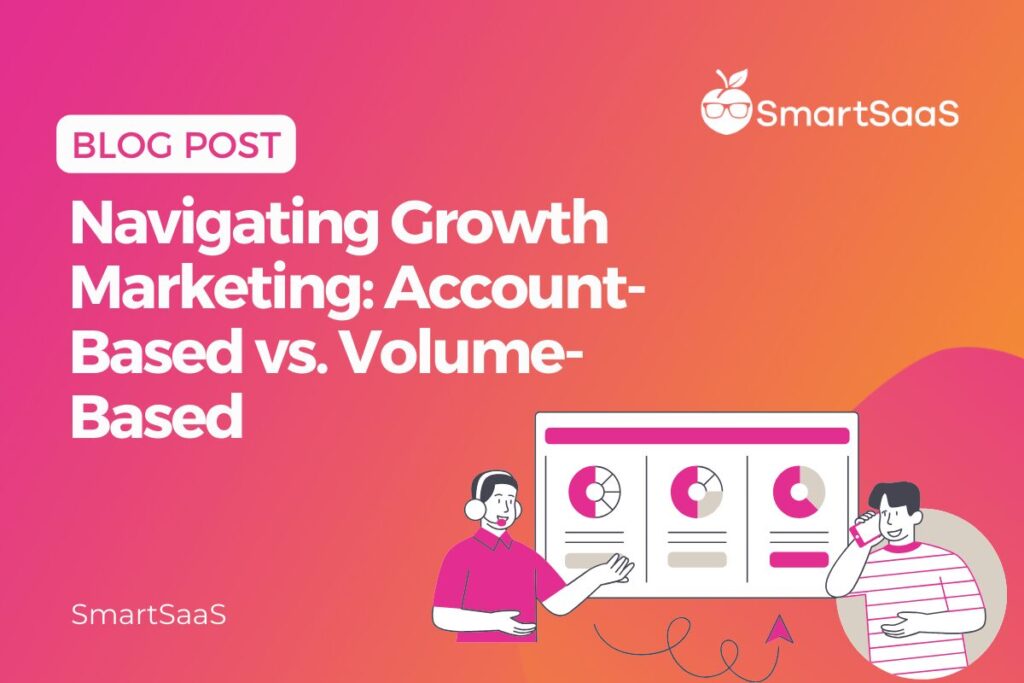The Power of Sales and Marketing Collaboration in 2024

Picture this – a small tech startup struggling to meet its revenue targets. The sales team is overwhelmed with leads that aren’t converting, while the marketing team is frustrated with their efforts going unnoticed. It’s a classic tale of a disconnect between sales and marketing. But what if there was a way to bridge this gap and create a harmonious alliance? Enter sales and marketing collaboration.
With a collaborative mindset, sales and marketing can work hand in hand to drive revenue, generate leads, and build brand awareness. By breaking down the silos and fostering open communication, businesses can tap into the immense potential that lies in the synergy between these two essential functions.
Benefits of Sales and Marketing Collaboration
When sales and marketing teams collaborate effectively, the benefits are far-reaching. Firstly, collaboration leads to increased customer satisfaction. By working together, sales and marketing can better understand the customer’s journey, ensuring a seamless experience from the first touchpoint to the final purchase. This alignment enables the teams to create targeted and personalized campaigns that resonate with the customer’s needs, ultimately driving greater satisfaction and loyalty.
Another considerable benefit of collaboration is improved lead quality. Sales and marketing can work together to define and refine the ideal customer profile, ensuring that both teams target the right audience. By aligning their efforts, they can create cohesive messaging and campaigns that resonate with the target market, resulting in higher-quality leads and increased conversion rates.
Lastly, collaboration fosters a culture of continuous improvement. When sales and marketing come together, they can share valuable insights and data, allowing for data-driven decision-making and optimization. By analyzing the data from both teams, businesses can identify trends, spot opportunities, and make informed strategic decisions that drive growth.
Enhancing Communication between Sales and Marketing
Effective communication is the foundation of successful collaboration between sales and marketing. Without clear lines of communication, misunderstandings and misalignment can occur, hindering the overall effectiveness of both teams. Here are some strategies to enhance communication:
- Regular Meetings: Set up regular meetings between sales and marketing to discuss ongoing campaigns, share updates, and brainstorm ideas. These meetings allow both teams to align their efforts and address any challenges or concerns.
- Shared Goals and Metrics: Establish shared goals and metrics that both sales and marketing can work towards. This ensures that both teams are aligned and incentivized to collaborate and support each other’s efforts.
- Collaboration Tools: Utilize collaboration tools such as project management software, CRM systems, and communication platforms to facilitate seamless communication and information sharing between sales and marketing.
Aligning Sales and Marketing Goals
Aligning sales and marketing goals is crucial for effective collaboration. Both teams can leverage each other’s strengths and drive better results when working towards a common objective. Here are some strategies to align goals:
- Joint Strategy Development: Involve both sales and marketing in developing the overall strategy. By including representatives from both teams in the strategic planning process, you can ensure that the goals and objectives are aligned.
- Shared KPIs: Define key performance indicators (KPIs) relevant to sales and marketing. This creates a sense of shared responsibility and accountability, fostering collaboration and teamwork.
- Regular Performance Reviews: Conduct regular performance reviews to assess progress towards shared goals and identify areas for improvement. These reviews allow both teams to celebrate successes, address challenges, and make necessary adjustments to stay on track.
Collaborative Strategies for Lead Generation
Lead generation is critical to sales and marketing collaboration. Working together allows both teams to optimize their lead generation efforts and drive better results. Here are some collaborative strategies for lead generation:
- Buyer Persona Development: Collaborate on developing buyer personas to better understand the target audience. By aligning their efforts, sales and marketing can create targeted messaging and campaigns that resonate with the buyer’s pain points and needs.
- Content Collaboration: Work together to create compelling and relevant content that attracts and engages the target audience. Sales can provide valuable insights into the customer’s pain points and frequently asked questions, while marketing can leverage these insights to create content that addresses these needs.
- Lead Nurturing: Develop a lead nurturing strategy that combines sales and marketing strengths. Sales can provide personalized follow-ups and tailored solutions, while marketing can support these efforts with targeted email campaigns, educational content, and webinars.
Integrated Sales and Marketing Campaigns
Integrated sales and marketing campaigns are a powerful way to maximize the impact of collaboration. Both teams can create a seamless and consistent customer experience by aligning their efforts and messaging. Here are some critical elements of integrated campaigns:
- Consistent Branding: Ensure that there is consistency in branding across all sales and marketing touchpoints. This includes messaging, visual identity, and overall tone of communication.
- Coordinated Messaging: Develop a coordinated messaging strategy that aligns sales and marketing efforts. This ensures the customer receives a consistent message throughout their journey, from initial awareness to the final purchase.
- Shared Content Distribution: Collaborate on the distribution of content to maximize reach and engagement. Sales can leverage their personal networks and customer relationships, while marketing can utilize digital channels and automation tools to amplify the content’s reach.
Measuring the Impact of Sales and Marketing Collaboration
Measuring the impact of sales and marketing collaboration is crucial to understanding its effectiveness and identifying areas for improvement. Here are some key metrics to consider:
- Revenue Growth: Measure the overall revenue growth and attribute it to the collaborative efforts of sales and marketing. This provides a tangible measure of the impact of collaboration on the bottom line.
- Lead Conversion Rate: Track the conversion rate of leads generated through collaborative efforts. This helps assess the quality of leads and the effectiveness of the collaborative strategies implemented.
- Customer Satisfaction: Monitor customer satisfaction metrics, such as Net Promoter Score (NPS) or customer feedback, to gauge the impact of collaboration on the customer experience.
Developing a Unified Sales and Marketing Process
A unified sales and marketing process is the cornerstone of effective collaboration. By developing a streamlined and integrated process, businesses can eliminate silos and foster a culture of collaboration. Here are some steps to develop a unified process:
- Define the Customer Journey: Map out the customer journey and identify the touchpoints where sales and marketing intersect. This clearly explains how both teams can work together to create a seamless experience.
- Establish Clear Roles and Responsibilities: Clearly define the roles and responsibilities of sales and marketing at each stage of the customer journey. This ensures that everyone understands their role and knows how to collaborate effectively.
- Implement a Unified CRM System: Utilize a unified Customer Relationship Management (CRM) system that allows both sales and marketing to access and update customer information in real-time. This ensures that both teams have a holistic view of the customer and can collaborate effectively.
Utilizing Technology for Collaboration
Technology is crucial in facilitating sales and marketing collaboration. Here are some key technologies to enhance collaboration:
- CRM Systems: Implement a robust CRM system that allows seamless information sharing between sales and marketing. This ensures that both teams can access real-time customer data, enabling effective collaboration.
- Marketing Automation Tools: Leverage marketing automation tools to streamline processes, automate repetitive tasks, and enable better collaboration between sales and marketing. These tools can help with lead scoring, email marketing, and campaign management.
- Collaboration Platforms: Utilize collaboration platforms such as project management software, communication tools, and document-sharing platforms to facilitate seamless communication and information sharing between sales and marketing.
Our Top Tools for Collaboration
Salesforce CRM: A leading CRM system that offers comprehensive customer data management, real-time analytics, and integration capabilities. It helps bridge the gap between sales and marketing by providing a unified view of customer interactions.
HubSpot Marketing Hub: This marketing automation tool excels in lead scoring, email marketing, and campaign management. It integrates seamlessly with CRM systems, ensuring that marketing efforts are aligned with sales data.
Monday.com: A versatile project management tool that facilitates collaboration through task assignments, progress tracking, and customizable workflows. It’s ideal for coordinating sales and marketing projects.
Slack: A popular communication platform that enables real-time messaging, file sharing, and integration with various business tools. It’s great for keeping sales and marketing teams connected and informed.
Marketo Engage: Another powerful marketing automation platform known for its lead management, email campaigns, and analytics. It integrates well with CRM systems to provide a cohesive workflow.
Trello: A user-friendly project management tool that uses boards, lists, and cards to organize and prioritize projects. It’s excellent for collaborative planning between sales and marketing.
Asana: This project management software helps teams coordinate and manage their work, from small projects to strategic initiatives. It’s effective for aligning sales and marketing goals and tasks.
To Wrap Things Up
In conclusion, sales and marketing collaboration is a game-changer for businesses looking to drive revenue, generate leads, and build brand awareness. By enhancing communication, aligning goals, and developing a unified process, businesses can unlock the true potential of their sales and marketing teams. So, let’s embrace collaboration, break down the silos, and embark on a journey of success together.






Responses